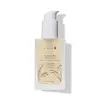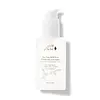What's inside
What's inside
 Key Ingredients
Key Ingredients

 Benefits
Benefits

 Concerns
Concerns

 Ingredients Side-by-side
Ingredients Side-by-side

Morus Alba Root Water
Skin ConditioningGlycerin
HumectantHamamelis Virginiana Water
AstringentLonicera Japonica Flower Extract
Skin ConditioningRice Ferment Filtrate
Skin ConditioningGlycyrrhiza Glabra Root Extract
BleachingCitrus Limon Bud Extract
HumectantCitrus Grandis Extract
AntimicrobialNiacinamide
SmoothingSalix Alba Bark Extract
AstringentArctostaphylos Uva-Ursi Leaf Extract
Skin ConditioningLentinus Edodes Extract
Skin ConditioningSodium Hyaluronate
HumectantSodium PCA
HumectantCitrus Aurantium Bergamia Fruit Oil
MaskingCedrus Atlantica Bark Oil
MaskingVetiveria Zizanoides Root Oil
MaskingCitrus Sinensis Peel Oil Expressed
PerfumingSalvia Officinalis Oil
MaskingLavandula Angustifolia Oil
MaskingMorus Alba Root Water, Glycerin, Hamamelis Virginiana Water, Lonicera Japonica Flower Extract, Rice Ferment Filtrate, Glycyrrhiza Glabra Root Extract, Citrus Limon Bud Extract, Citrus Grandis Extract, Niacinamide, Salix Alba Bark Extract, Arctostaphylos Uva-Ursi Leaf Extract, Lentinus Edodes Extract, Sodium Hyaluronate, Sodium PCA, Citrus Aurantium Bergamia Fruit Oil, Cedrus Atlantica Bark Oil, Vetiveria Zizanoides Root Oil, Citrus Sinensis Peel Oil Expressed, Salvia Officinalis Oil, Lavandula Angustifolia Oil
Melaleuca Alternifolia Leaf Water
AntimicrobialHamamelis Virginiana Water
AstringentGlycerin
HumectantLonicera Japonica Flower Extract
Skin ConditioningMelaleuca Alternifolia Leaf Oil
AntioxidantAlgae Extract
EmollientRosmarinus Officinalis Leaf Extract
AntimicrobialSalix Alba Bark Extract
AstringentMelia Azadirachta Leaf
Skin ConditioningPetroselinum Crispum Leaf Oil
MaskingArctium Lappa Root Extract
Skin ConditioningCurcuma Longa Root Extract
MaskingMahonia Aquifolium Root Extract
AstringentSodium Hyaluronate
HumectantMelaleuca Alternifolia Leaf Water, Hamamelis Virginiana Water, Glycerin, Lonicera Japonica Flower Extract, Melaleuca Alternifolia Leaf Oil, Algae Extract, Rosmarinus Officinalis Leaf Extract, Salix Alba Bark Extract, Melia Azadirachta Leaf, Petroselinum Crispum Leaf Oil, Arctium Lappa Root Extract, Curcuma Longa Root Extract, Mahonia Aquifolium Root Extract, Sodium Hyaluronate
 Reviews
Reviews

Alternatives
Ingredients Explained
These ingredients are found in both products.
Ingredients higher up in an ingredient list are typically present in a larger amount.
Glycerin is already naturally found in your skin. It helps moisturize and protect your skin.
A study from 2016 found glycerin to be more effective as a humectant than AHAs and hyaluronic acid.
As a humectant, it helps the skin stay hydrated by pulling moisture to your skin. The low molecular weight of glycerin allows it to pull moisture into the deeper layers of your skin.
Hydrated skin improves your skin barrier; Your skin barrier helps protect against irritants and bacteria.
Glycerin has also been found to have antimicrobial and antiviral properties. Due to these properties, glycerin is often used in wound and burn treatments.
In cosmetics, glycerin is usually derived from plants such as soybean or palm. However, it can also be sourced from animals, such as tallow or animal fat.
This ingredient is organic, colorless, odorless, and non-toxic.
Glycerin is the name for this ingredient in American English. British English uses Glycerol/Glycerine.
Learn more about GlycerinHamamelis Virginiana Water is made by distilling parts of the witch hazel plant. You can also call this ingredient "witch hazel water".
The name 'Hamamelis Virginiana Water' refers to the distillation product used in cosmetics. On the other hand, 'Witch Hazel' refers to the active drug ingredient.
Unless it is specified to be non-alcohol, many types of witch hazel ingredients are distilled in denatured alcohol.
Witch Hazel water is an astringent, anti-inflammatory antioxidant, and antibacterial ingredient.
It contains tannins. Tannins have a drying effect when used on skin by constricting proteins. The constriction also minimizes the appearance of pores.
Both the tannins and fragrance found in witch hazel may be skin-sensitizing.
Witch hazel water gets anti-inflammatory and antibacterial properties from its catechin and gallic acid content.
Indigenous groups have used witch hazel to help treat inflammation in North America for centuries.
Learn more about Hamamelis Virginiana WaterLonicera Japonica Flower Extract comes from the honeysuckle flower.
Honeysuckles have skin protecting, anti-viral, and anti-inflammatory properties. It contains many antioxidants, such as luteolin, caffeic acid, loniflavone, and chlorogenic acids.
This honeysuckle is native to East Asia and used in traditional Chinese medicine to treat fever and inflammation.
Learn more about Lonicera Japonica Flower ExtractSalix Alba Bark Extract comes from the white willow tree, which is native to Europe and Central Asia.
Salix Alba Bark Extract has often been described as salicylic acid's cousin. This is due to the salicin it contains. However, studies are limited showing salix alba bark to be an effective salicylic acid alternative.
Salicin does have anti-inflammatory and antioxidant properties. It has shown to decrease the formation of inflammatory mediators, such as tumor necrosis factor-α and nuclear factor-kappa B. Salicin also has a mildly exfoliating effect on the skin.
Several other components in salix alba bark extract also contain antioxidant properties, such as flavonoids and polyphenols. Antioxidants may help with anti-aging as they neutralize harmful free-radical molecules.
Willow Bark extract has been used for thousands of years. Ancient civilizations used white willow to help treat pain and fevers.
Learn more about Salix Alba Bark ExtractSodium Hyaluronate is hyaluronic acid's salt form. It is commonly derived from the sodium salt of hyaluronic acid.
Like hyaluronic acid, it is great at holding water and acts as a humectant. This makes it a great skin hydrating ingredient.
Sodium Hyaluronate is naturally occurring in our bodies and is mostly found in eye fluid and joints.
These are some other common types of Hyaluronic Acid:
Learn more about Sodium Hyaluronate